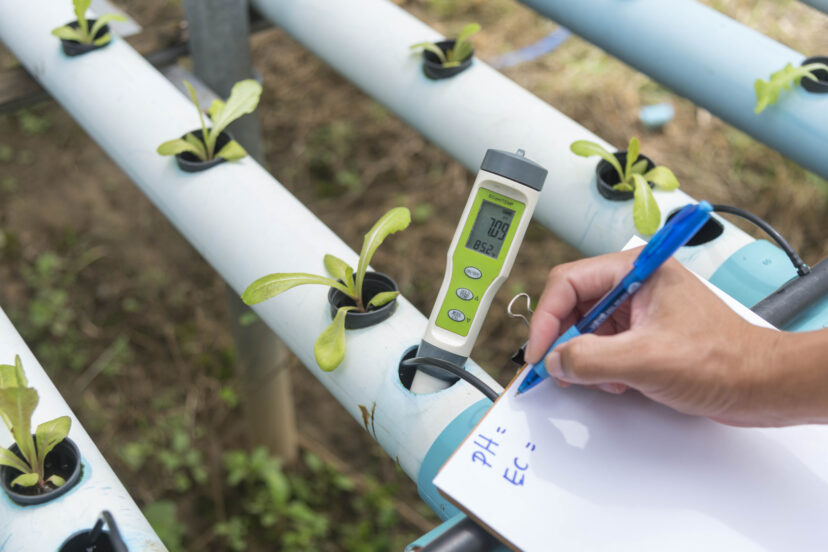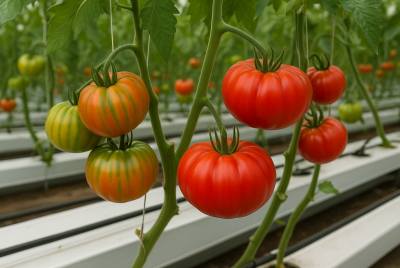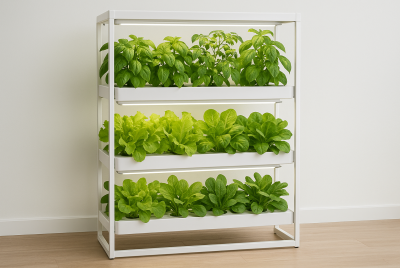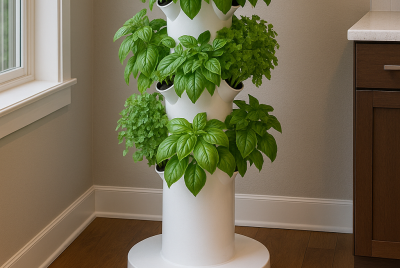How to Monitor pH and EC Levels in Hydroponic Nutrients
We may earn a commission for purchases made using our links. Please see our disclosure for more details.
As a hydroponic gardener, we should always ensure our growing plants are well nurtured. But how do you maintain the right pH and EC levels in your hydroponic system? Without proper monitoring, your plants might end up with growth and nutrient deficiencies or worse, even plant death. Take control of your hydroponic success and learn how to adjust the pH and EC levels in hydroponic nutrients with this comprehensive guide.
What Are pH and EC in Hydroponic Nutrients?
The pH and EC levels in hydroponic nutrients are important to ensure that plants grow efficiently and that they get the right amount of essential nutrients. These are measurements of the acidity (or alkalinity) as well as the nutrient concentration in a hydroponic solution. EC, or electrical conductivity, measures how concentrated your nutrients are. Imagine seasoning a pot of soup—you don’t want it too salty or too bland, and EC tells you exactly where you stand. By understanding these terms, you’re not just a gardener—you’re a chemist crafting the perfect recipe for growth.
Why Are pH and EC Levels Important?
Think of plants as guests at a buffet. If the food (nutrients) is there but poorly prepared (wrong pH), they can’t enjoy it. Similarly, if there’s too much or too little food (off EC levels), the plants will either overeat or starve. Keeping these levels balanced ensures your plants not only survive but thrive, soaking up nutrients like happy diners.
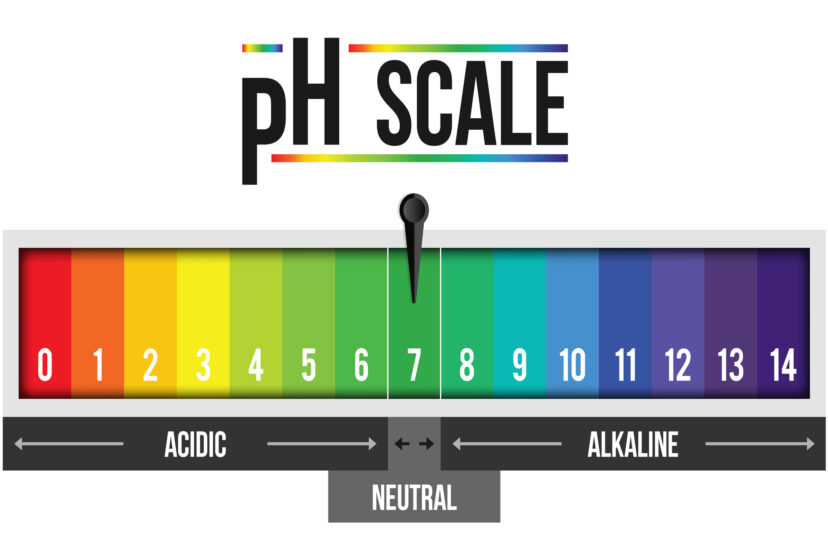
The Ideal pH Range for Hydroponic Nutrients
For most plants, the perfect pH falls between 5.5 and 6.5. It’s the golden zone where nutrients dissolve easily, making them readily available for absorption—like sugar effortlessly blending into your morning coffee. While certain plants like hydroponic tomatoes or strawberries may prefer slightly different ranges, this bracket suits most crops. Imagine this range as a harmonious melody that keeps your plants dancing in delight.
What About the Ideal EC Range?
EC levels depend on what stage your plants are in:
- Seedlings: 0.5–1.0 mS/cm – gentle like a baby’s first spoonful of food.
- Vegetative growth: 1.0–2.0 mS/cm – hearty but not overwhelming.
- Flowering and fruiting: 2.0–3.0 mS/cm – a robust feast for mature plants.
Adjusting EC is like spicing up a dish—you’re tailoring the intensity to match the plant’s appetite.
How to Measure pH Levels
Measuring pH isn’t rocket science. Here’s what you’ll need:
- Digital pH meter: Precise and efficient.
- pH test strips: Affordable but less exact.
- pH liquid kits: A visual option with color-coded results.
Using a digital pH meter is as straightforward as checking your body temperature. Dip the probe into the solution, wait a few seconds, and voilà—you’ve got your reading.
How to Measure EC Levels
To measure EC, invest in a digital EC meter. This tool, much like its pH counterpart, does the job swiftly. Just dip it into the solution, and it’ll display the nutrient concentration. Many meters also show TDS (total dissolved solids), giving you a clearer picture of your solution’s strength.
Essential Products for Monitoring and Adjusting pH and EC Levels
To ensure accuracy and ease in managing your hydroponic nutrients, here’s a list of essential tools and products:
- Digital pH Meter
- Reliable for precise pH readings. Look for models with auto-calibration features for convenience.
- Digital EC Meter or TDS Meter
- Measures nutrient strength and water quality accurately. Choose a durable and waterproof option for long-term use.
- pH Calibration Solutions
- Essential for keeping your pH meter accurate. Use 4.0 and 7.0 calibration solutions for regular maintenance.
- pH Up and pH Down Solutions
- Quick and effective for adjusting pH levels. Choose products specifically formulated for hydroponics.
- Nutrient Solution for Hydroponics
- High-quality nutrient formulas help maintain stable pH and EC levels while providing optimal nutrition.
With these tools and products, managing your hydroponic system will be a seamless and successful endeavor.
When Is The Best Time to Check Your EC and pH?
Regular monitoring is crucial. Follow these checkpoints:
- Before adding nutrients: Test the water’s baseline.
- After mixing nutrients: Ensure everything is balanced.
- Daily or every few days: Catch any issues early.
Think of this routine like maintaining your car. Just as you’d check the oil and gas, keeping an eye on pH and EC keeps your plants running smoothly.
How to Adjust pH Levels
Adjusting pH is a simple process:
- Add a small amount of pH Up (if it’s too low) or pH Down (if it’s too high).
- Stir the solution thoroughly.
- Retest and repeat as needed.
Always adjust pH after adding nutrients, as they can shift the levels slightly. It’s a bit like seasoning a dish—taste before you tweak.
How to Adjust EC Levels
For EC, the process is equally intuitive:
- If EC is too high, dilute the solution with more water.
- Add concentrated nutrients if you notice that the EC is too low.
Stir well and measure again. It’s all about finding that Goldilocks zone—not too strong, not too weak, but just right.
What Will Happen if pH or EC Levels Are Too High?
When pH soars too high, essential nutrients become locked away like treasure in a sealed vault. Your plants may show signs like yellowing leaves or stunted growth. High EC, on the other hand, can overwhelm plants, leading to nutrient burn—a condition where leaf edges turn brown and crispy.
What Will Happen if pH or EC Levels Are Too Low?
Low pH can cause toxicity, where plants absorb too much of certain nutrients, leading to imbalances. If EC dips too low, plants starve, appearing pale and frail. Both scenarios hinder growth, leaving your garden looking less vibrant.
How to Prevent Fluctuations in pH and EC
Prevention is your best defense. Here’s how:
- Use hydroponic-specific nutrient solutions.
- Monitor water temperature; extremes can impact readings.
- Regularly clean your system to avoid residue buildup.
By staying proactive, you’ll save yourself the headache of constant adjustments.
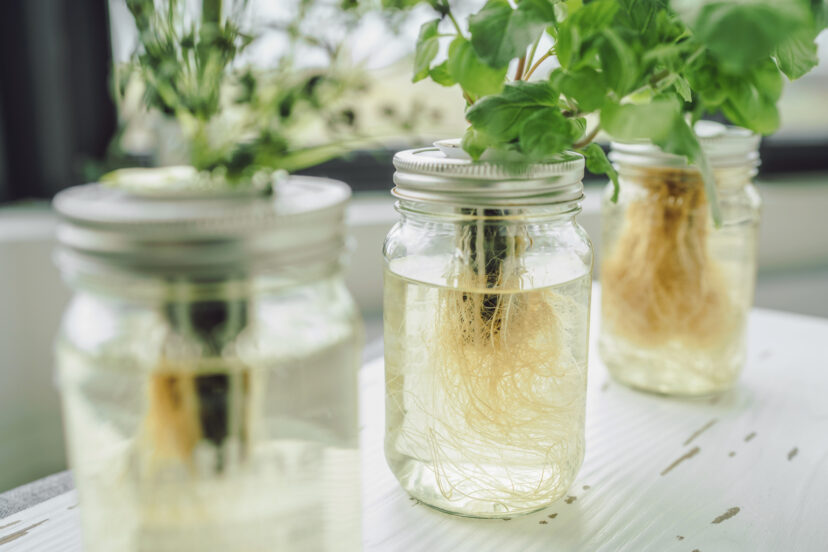
The Role of Water Quality
The water you use is the cornerstone of your nutrient solution. Hard water, rich in dissolved salts, can throw off pH and EC readings. Filtered or distilled water is ideal for maintaining consistency and avoiding surprises.
Signs Your pH or EC Levels Are Off
Your plants will let you know if something’s wrong. Look for:
- Yellowing or curling leaves.
- Brown, burnt tips.
- Slow growth or drooping.
These signs are the plants’ SOS signals, urging you to check and correct.
Troubleshooting Common Issues
When things go awry, consider these potential culprits:
- Old nutrient solution: Replace it regularly.
- Dirty tools: Clean your meters and system.
- Environmental stress: High temperatures can skew EC.
Addressing these factors promptly restores balance.
The Impact of Temperature on pH and EC
Temperature plays a silent yet significant role. Warm water holds less oxygen and can alter EC readings. Aim for a temperature range of 65°F to 75°F to maintain stability and ensure optimal growth.
Scientific Insights on pH and EC Management in Hydroponics
Maintaining stable pH and EC levels is critical for plant health and nutrient efficiency in hydroponics. Research on Sustainable Hydroponics Using Zero-discharge Nutrient Management highlights the effectiveness of automated pH control systems in promoting optimal growth while minimizing nutrient waste. Similarly, a study on Distributing Nutrient Solution in Hydroponic Plants emphasizes the role of precise EC and pH management in ensuring plants receive the nutrients they need for efficient growth and yield.
Testing Runoff for Accurate Monitoring
Runoff testing is an invaluable practice, particularly in systems like drip hydroponics, where water flows through the root zone and exits as excess. By analyzing the pH and EC of this runoff, you can gain a deeper understanding of what’s happening around the roots, where nutrient uptake takes place. Significant differences between the input and runoff values indicate potential issues, such as nutrient imbalances, salt buildup, or pH drifts in the root zone. These changes serve as a red flag, signaling the need for immediate adjustments. Regular runoff testing ensures your plants are growing in an optimal environment, preventing stunted growth or nutrient deficiencies caused by unseen root-zone complications.
Why Calibration Is Crucial
Your pH and EC meters might seem like reliable tools, but even the best devices can lose accuracy over time. This natural wear and tear can lead to skewed readings, leaving you unknowingly off course with your adjustments. Calibration, performed monthly with the appropriate calibration solutions, restores your meter’s precision and guarantees accurate measurements. Without proper calibration, you risk making decisions based on faulty data, which could harm your plants and waste valuable nutrients. Think of it as tuning a musical instrument—only with a well-calibrated meter can you hit the right notes for your hydroponic garden.
Automating pH and EC Monitoring
Automation is revolutionizing hydroponics, offering convenience and precision that was once out of reach for many growers. Automated controllers act like vigilant caretakers, continuously monitoring and adjusting pH and EC levels in real time. These systems eliminate the guesswork, ensuring that your nutrient solution remains within the ideal range at all times. For advanced growers, this means less time spent on manual checks and adjustments, allowing more focus on other aspects of plant care. Though it requires an initial investment, automation pays off by providing peace of mind and maximizing the efficiency of your hydroponic system.
Wrapping It Up
Monitoring and adjusting pH and EC levels may feel like an intricate dance at first, but with practice, it becomes second nature. These parameters are the cornerstone of your hydroponic garden’s success, ensuring that your plants receive the nutrients they need in the right proportions. Armed with the right tools, a keen eye, and a commitment to consistency, you can master this essential aspect of hydroponics. Think of it as building a relationship with your plants—when you listen, observe, and respond to their needs, they’ll reward you with vibrant growth and bountiful harvests. Happy growing!
FAQs
1. How often should I check pH and EC levels?
Daily checks are recommended for beginners. As you gain experience, testing every few days may suffice.
2. Can I use tap water for hydroponics?
Yes, but test its pH and EC first. Hard water might need adjustments or filtration.
3. What happens if I ignore pH and EC levels?
Your plants could suffer from nutrient deficiencies, toxicity, or stunted growth. Regular monitoring is crucial for success.
4. Do I need to use different meters for EC and pH?
While combo meters exist, separate devices often provide greater accuracy.
5. Is there a natural way to adjust pH?
Yes, you can use natural options like lemon juice (to lower pH) or baking soda (to raise pH). However, commercial solutions offer more consistency.

